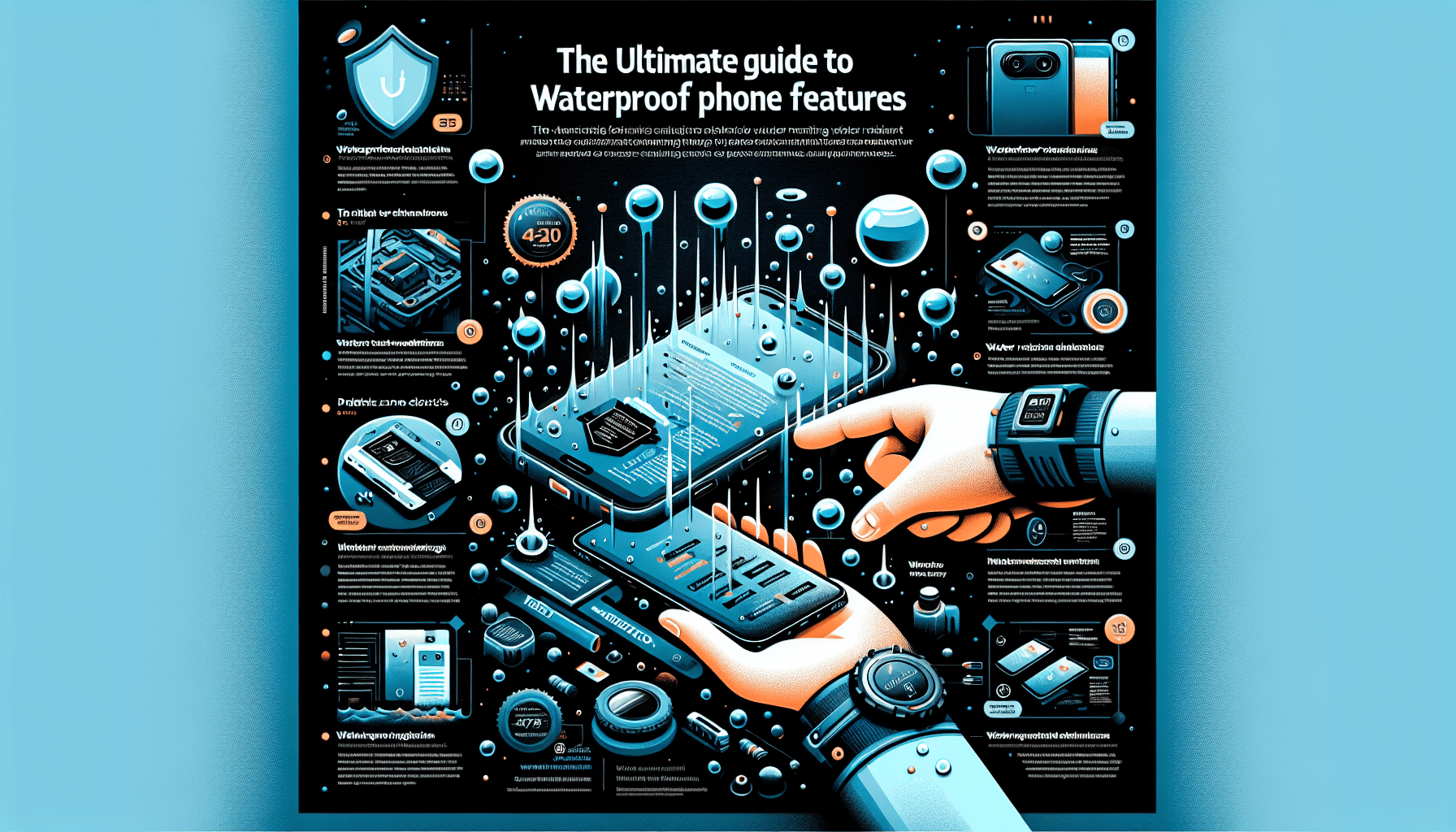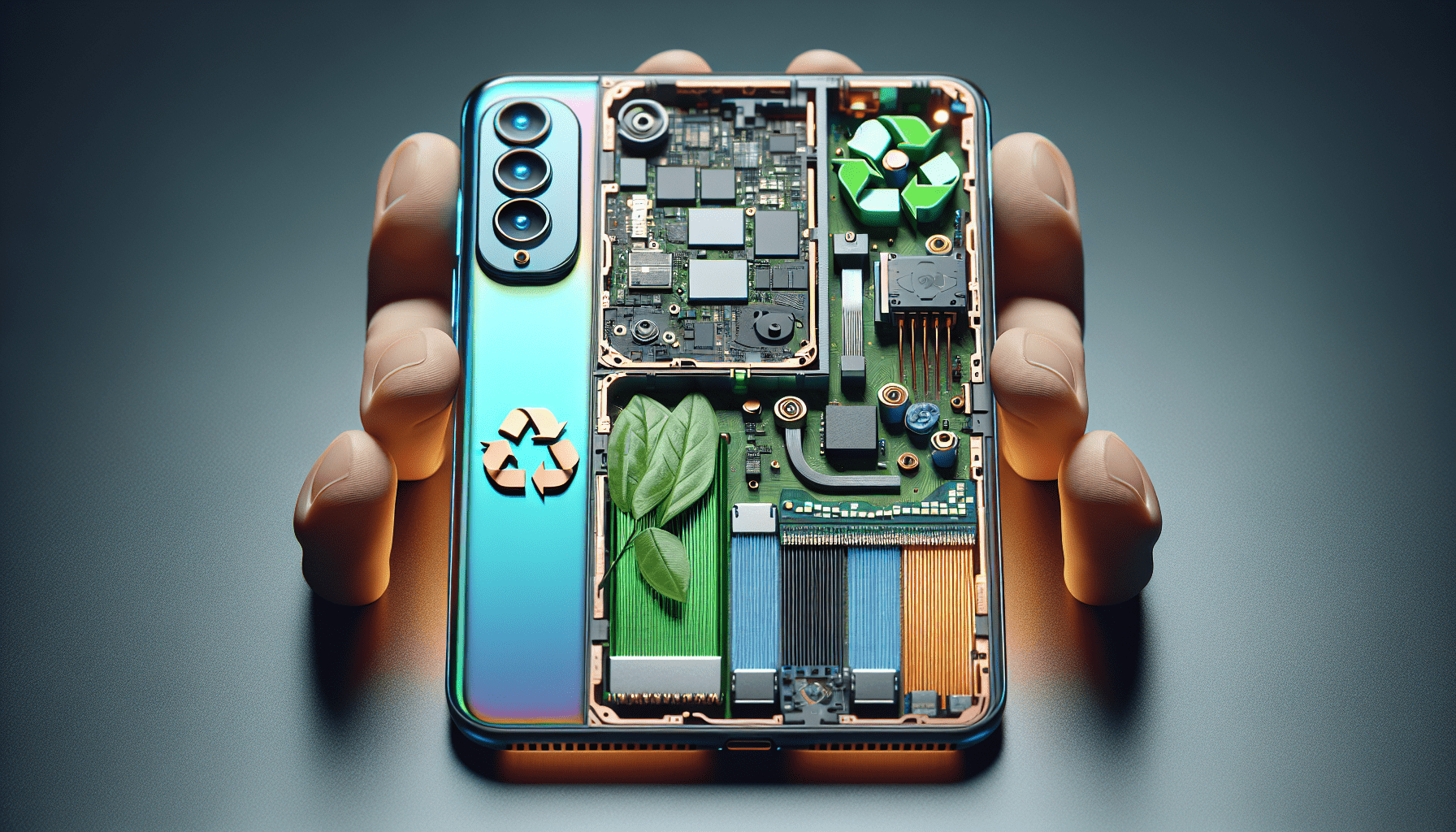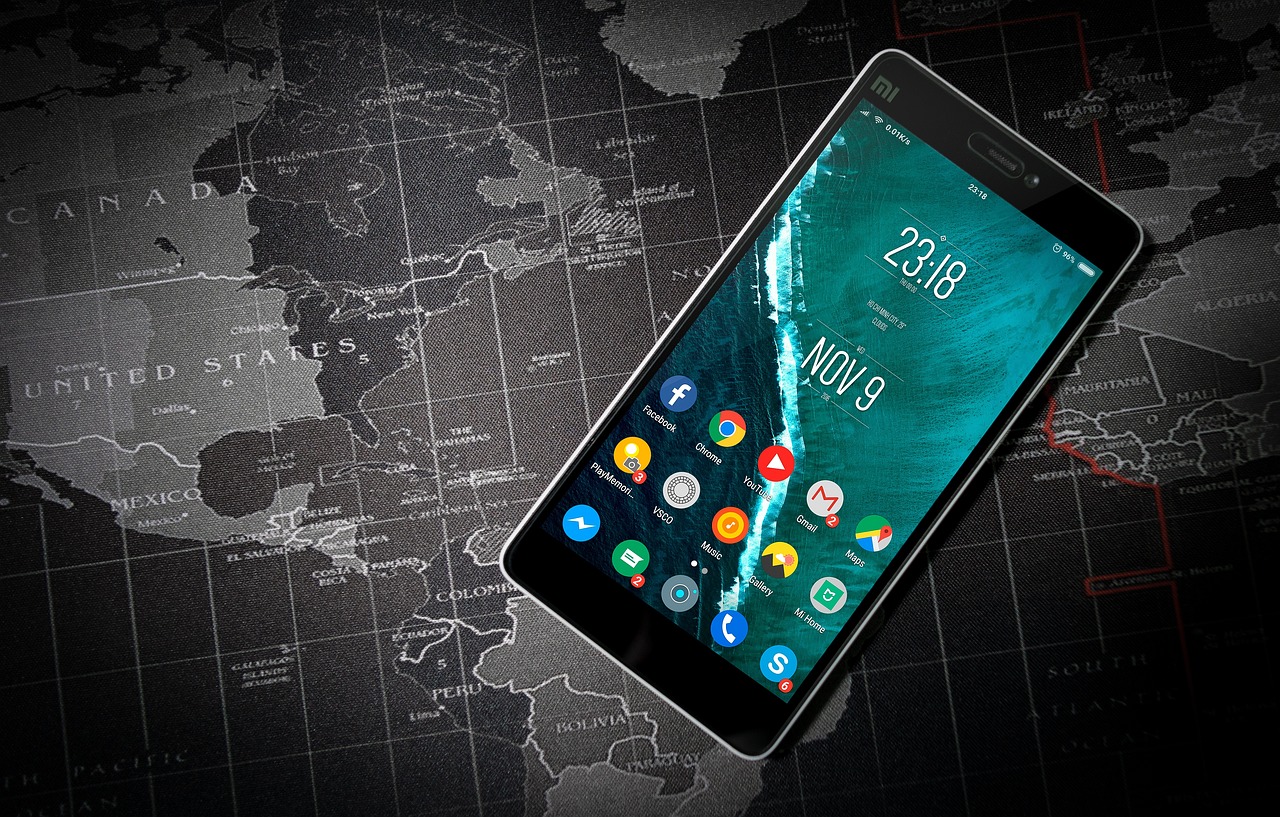In this article, you will discover the ultimate guide to waterproof phone features. If you’ve ever had a heart-stopping moment when your phone comes into contact with water, then this guide is for you. From exploring the different levels of water resistance to understanding what an IP rating means, we will take you on a journey through the world of waterproof phone features. Whether you’re an adventurer seeking a phone that can withstand the elements or someone who simply wants peace of mind during accidental spills, this guide will provide you with the knowledge to make an informed decision when it comes to choosing the perfect waterproof phone for your needs. So, get ready to dive into the world of waterproof phone features and ensure that your phone stays protected no matter what life throws at it.
IP Rating Explanation
What is an IP rating?
An IP rating, also known as an Ingress Protection rating, is a standard set by the International Electrotechnical Commission (IEC) to classify the degree of protection provided by electronic devices against intrusion from solid particles and liquids. The rating consists of two digits, with the first indicating the level of protection against solids, such as dust, and the second representing the level of protection against liquids. These ratings help consumers understand the level of durability and resistance their devices have against the elements.
Understanding the IP rating system
The IP rating system is crucial in determining the resistance of electronic devices, including smartphones, to foreign particles and moisture. The first digit of the rating corresponds to the device’s resistance to solids, such as dust and dirt. The second digit indicates its resistance to liquids, including water. The higher the number, the greater the protection.
Different levels of IP ratings
IP ratings range from IP00 to IP69K, each representing a different level of protection. For example, an IP00 rating indicates no protection against solids or liquids, while an IP68 rating signifies complete protection against dust and protection from prolonged submersion in water. It is essential to understand these ratings to make an informed decision when purchasing a waterproof phone.
Waterproof vs. Water-Resistant
Distinguishing between waterproof and water-resistant
When it comes to electronic devices, there is a distinction between being waterproof and being water-resistant. A waterproof device can withstand being submerged in water for a significant period without incurring damage, while a water-resistant device can only resist water to a certain extent. It is important to understand this difference to know the limitations of your device and choose the level of protection that suits your needs.
Degrees of water resistance
Water-resistant devices are often categorized with an IP rating to indicate the level of water resistance they possess. For example, a device with an IPX7 rating can withstand being submerged in water up to a meter deep for 30 minutes. On the other hand, a waterproof device with an IP68 rating can withstand submersion in water of up to 1.5 meters for 30 minutes or more. Understanding the specific rating systems can help you determine the degree of protection you may need in different situations.
Benefits of Waterproof Phones
Protection against water damage
The primary advantage of waterproof phones is their ability to resist water damage. Accidental spills or unexpected rain showers no longer pose a threat to your device’s functionality. With a waterproof phone, you can use your device worry-free by the pool, at the beach, or even in heavy rain without the fear of damaging it.
Extended durability
Waterproof phones are typically built to withstand more than just water exposure. The process of waterproofing often includes reinforcing the phone’s structure, making it less prone to damage from drops and impacts. This added durability can greatly extend the lifespan of your device, saving you money on repairs or replacements in the long run.
Outdoor usability
With a waterproof phone, you can take your device with you wherever you go, without worrying about the environment. Whether you’re hiking, camping, or enjoying water sports, a waterproof phone allows you to capture photos, videos, and memories without limitations. You can even use your phone while swimming or snorkeling, giving you the freedom to document your adventures like never before.
Types of Waterproof Phones
Various smartphone brands offering waterproof models
Several reputable smartphone brands offer waterproof models to cater to the evolving needs of consumers. Brands such as Apple, Samsung, Google, and Sony have incorporated waterproofing technology into their flagship devices, providing users with a wider range of options to choose from.
Different price ranges
Waterproof phones come in various price ranges, making it accessible to people with different budgets. While high-end flagship devices may offer the latest and most advanced waterproofing technology, there are also mid-range and budget-friendly options available that provide sufficient protection against water damage.
Comparing features and specifications
When choosing a waterproof phone, it is important to consider not only the waterproofing capabilities but also other features and specifications that matter to you. Factors such as camera quality, processing power, display size, and battery life should all be taken into account to ensure that you find the perfect device that meets both your waterproofing needs and overall preferences.
Waterproof Phone Technology
Sealed components
Waterproof phones are equipped with sealed components to ensure water cannot enter through any openings. This includes sealed charging ports, headphone jacks, and SIM card trays. These watertight seals prevent water from seeping into the sensitive internal components and causing damage.
Specialized adhesives and coatings
Manufacturers use specialized adhesives and coatings to protect the internal circuitry of waterproof phones. These coatings create an extra layer of protection against moisture, preventing it from damaging the phone’s internal components. The adhesives and coatings used are designed to be water-resistant and durable, ensuring long-lasting waterproof performance.
Waterproofing standards
To meet waterproofing standards, manufacturers subject their devices to various tests to ensure they can withstand specified levels of water exposure. These tests often involve submerging the device in water for a specific duration while monitoring its performance and functionality. Meeting these standards guarantees that the device can withstand common water-related accidents and perform reliably in wet environments.
Waterproofing Methods
Physical barriers
One of the common methods used to waterproof phones is the implementation of physical barriers. This can include the use of waterproof gaskets and seals around openings, such as the ports and buttons, to prevent water from entering the device. These physical barriers provide an extra layer of protection against water intrusion.
Nano-coating
Nano-coating is a method where a thin, water-repellent layer is applied to the phone’s internal and external components. This coating creates a barrier that prevents water from penetrating the surface of the device. Nano-coating technology is effective in protecting the phone from accidental spills and light rain but may not be suitable for prolonged submersion.
Waterproof cases
For additional protection, waterproof cases can be used. These cases are designed to enclose the entire phone, providing a complete seal against water. Waterproof cases are often made from durable materials and feature added shock resistance, making them an excellent option for those who require maximum protection for their devices.

Best Practices for Maintaining Waterproof Phones
Avoiding extreme temperatures
While waterproof phones are designed to withstand water exposure, they may not be as resistant to extreme temperatures. It is important to avoid exposing your device to excessively hot or cold temperatures, as this can affect its performance and compromise its waterproofing features. When in doubt, it is best to refer to the manufacturer’s guidelines regarding temperature limits.
Regularly cleaning and drying
To maintain the integrity of your waterproof phone, it is crucial to regularly clean and dry it. Rinse it with clean water after exposure to saltwater or other liquids and gently wipe it dry with a soft cloth. This helps remove any residue or particles that may compromise the phone’s waterproof seals.
Proper handling and storage
Handling your waterproof phone with care is essential in preventing accidental damage. Avoid excessive force or impact that can potentially break the phone’s seals and compromise its waterproofing. Additionally, when storing your device, make sure it is placed in a dry and dust-free environment to maintain its water resistance.
Common Misconceptions about Waterproof Phones
Immunity to all liquids
While waterproof phones offer a significant level of protection against water, it is important to note that they are not immune to all kinds of liquids. Waterproofing technology is designed to withstand freshwater and occasional exposure to non-corrosive liquids. Harsh chemicals, corrosive substances, and liquids with high acidity or alkalinity can still damage the device, even if it has a high IP rating.
Underwater photography misconceptions
Waterproof phones often come with the capability to capture photos and videos underwater. However, it is important to understand the limitations of this feature. While the device may be able to withstand being submerged in water, the quality of underwater photos and videos may be affected due to water distortion and limited light conditions. It is best to familiarize yourself with the camera specifications and recommended underwater shooting techniques for optimal results.
Limitations of waterproofing
Although waterproof phones provide a considerable level of protection, it is important to remember that no device is completely infallible. Factors such as wear and tear, improper maintenance, and exceeding the specified water resistance limits can still lead to water damage. It is always advisable to exercise caution and follow the manufacturer’s guidelines to ensure the longevity and effectiveness of your waterproof phone.

Waterproof Accessories
Waterproof headphones
In addition to waterproof phones, there are also waterproof headphones available on the market. These headphones are designed specifically for water-related activities and are built to withstand submersion. Whether you are swimming, surfing, or simply relaxing by the pool, waterproof headphones allow you to enjoy your favorite music without worrying about water damage.
Waterproof cases and pouches
For those who prefer not to invest in a waterproof phone, waterproof cases and pouches offer a practical solution. These accessories provide a protective enclosure for your device, shielding it from water and other elements. With different designs and styles available, you can find a waterproof case or pouch that suits your needs and personal style.
Waterproof speakers
Waterproof speakers have become increasingly popular for outdoor enthusiasts and individuals who enjoy spending time near water. These speakers are designed to be water-resistant or fully waterproof, allowing you to enjoy your favorite music or podcasts without worrying about water damage. Whether you’re at the beach, by the pool, or on a boat, waterproof speakers can enhance your outdoor entertainment experience.
Testing and Certification of Waterproof Phones
Laboratory testing procedures
Manufacturers subject their waterproof phones to various laboratory testing procedures to ensure the devices meet the specified IP ratings. These tests often involve submerging the device in water at different depths and durations, as well as subjecting them to simulated wet environments. These rigorous testing procedures are performed to guarantee the water resistance capabilities of the device.
Certification bodies
Certification bodies play a vital role in validating the water resistance claims made by manufacturers. These bodies verify that the device’s IP rating is accurate and that it meets the required standards. Some common certification bodies include the International Electrotechnical Commission (IEC), the American National Standards Institute (ANSI), and the National Institute for Occupational Safety and Health (NIOSH).
Reliability of certifications
While certifications play an important role in assuring the water resistance of a device, it is essential to understand their limitations. Certifications do not guarantee the device’s performance under all conditions; they simply indicate that the device has undergone specific tests and meets certain standards. Consumer reviews, independent testing, and personal experiences can also provide valuable insights into a device’s reliability and performance under real-world conditions.
In conclusion, waterproof phones offer a range of benefits, including protection against water damage, extended durability, and outdoor usability. Understanding the IP rating system, differentiating between waterproof and water-resistant devices, and familiarizing oneself with the various waterproofing methods and accessories enable consumers to make informed decisions when selecting a waterproof phone. By following best practices for maintenance and understanding the limitations of waterproofing, users can fully enjoy the benefits and peace of mind that these devices provide.






